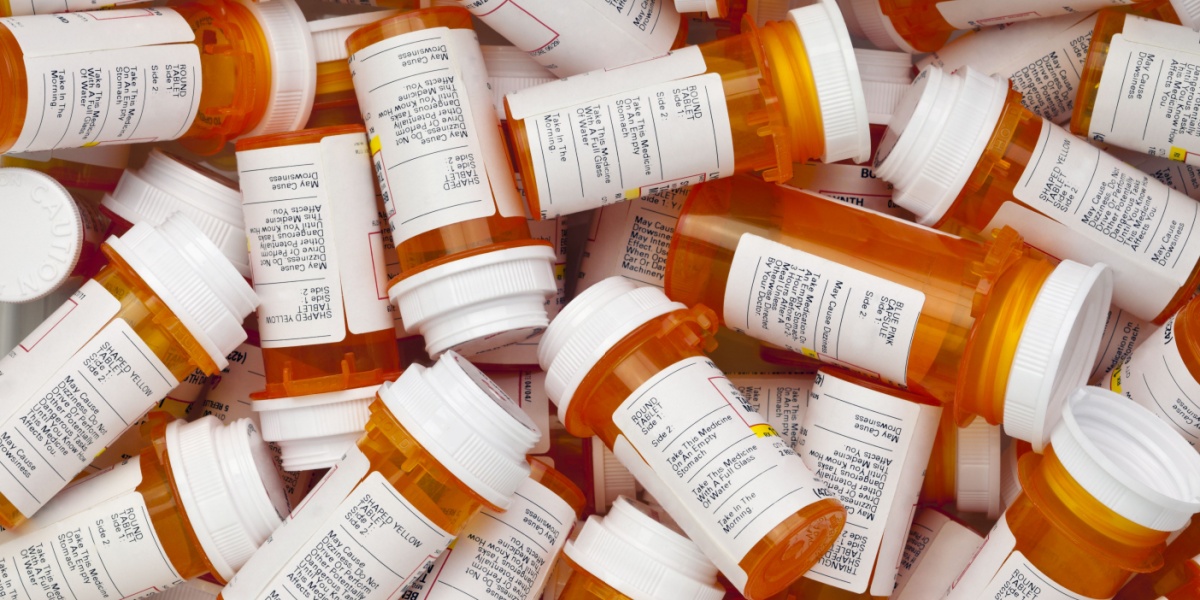We often think of substance use disorders as relating to alcohol, illicit substances like cocaine, and prescription opioids or benzodiazepines. However, there are a wide range of drugs that fall outside of these definitions that still hold potential for abuse, dependence, and addiction.
Despite the vague nature of classifying drugs, a common model exists of 7 different categories, though some would dispute these are incorrect.
There are some drugs that incorporate different categories of drugs in order to give a mixed effect for certain conditions. These drugs, referred to as fixed-dose combination (FDC) drugs, are often prescription medications but can occasionally be developed specifically for abuse.

What types of drugs are there?
There is no fast and clear way to define, separate, and compartmentalize drugs into categories. This is because different countries and states have their own ideas of what forms a class of drug and how they should be separated.
They may be defined by legal definitions (The Controlled Substance Act categorizes drugs by Schedule), by the intended effect on the user, by the effect on the brain (if they interact with the central nervous system, for example), or by the situation they are meant to be taken in (prescription or party drugs). There is also the issue of many drugs falling into multiple categories, making them harder to define.
Despite the vague nature of classifying drugs, a common model exists of 7 different categories, though some would dispute these are incorrect. The 7 drug types most often used are:[1]
Central Nervous system (CNS) depressants
CNS depressants are any drug that inhibits and slows brain functions and body processes. These include:
- Alcohol
- Benzodiazepines and other anti-anxiety medications such as Xanax or Valium
- Antidepressants such as Sertraline (Zoloft) and trazodone
- GHB (Gamma Hydroxybutyrate)
CNS stimulants
CNS stimulants are any drug that increases focus, attention, heart rate, sociability, and generally overstimulate the brain and body. CNS stimulants may include:
- Prescription stimulants are often used to treat ADHD and other behavioral issues. Prescription stimulants include Adderall, Concerta, and Dexedrine
- Illegal stimulants developed with the sole purpose of getting "high". These include cocaine, crack, meth, Flakka, and MDMA (though this is also classed as a hallucinogen).
- Legal stimulants such as caffeine and nicotine
Hallucinogens
Hallucinogens (also referred to as psychedelics) alter the user's perception of reality through visual and/or auditory hallucinations, disassociation from their body (out-of-body experience), ego death, intense euphoria, and emotional instability. Common hallucinogens include:
Narcotic analgesics
Narcotic analgesics are a group of drugs that include opioid opiate drugs that relieve pain, alter mood and create euphoria when abused. The issue with this classification is that opioids and opiates are also technically CNS depressants as they create the same effect on the mind and body. Common opioids in this category include
Dissociative anesthetics
Dissociative anesthetics are substances that relieve pain and cause people to feel separation from reality and their physical environment. They face a similar categorization issue to narcotic analgesics as some substances that fall into this bracket also fall into others. For example, ketamine can be considered both a dissociative anesthetic and a hallucinogen, and nitrous oxide is also an inhalant. Other dissociative anesthetics include:
- PCP
- DXM
- Methoxetamine
Inhalants
inhalants are substances that produce toxic vapors that create an altered state when sniffed in (huffed) by humans. Inhalants are more often than not household items such as gasoline, paint thinner, paint, plastic cement, aerosols, and nitrous oxide canisters used in whipped cream machines (whippets).
Cannabis
Cannabis (marijuana) has a drug class of its own as it produces its own unique effect on users, unlike other substances. While cannabis containing THC has been used for centuries, other substances derived from cannabis plants are becoming more popular. These include:
What drugs fall outside of these categories?
While the above drug categories are a good way to identify substances at a glance, some drugs don't easily fit into these definitions. These drugs may be less commonly abused but can still hold the potential for abuse, dependence, and addiction.
Other types of drugs include:
Anticonvulsants
Anticonvulsants are rarely abused on their own but are believed to enhance the effects of other substances when abused together most notably opioids. Commonly abused anticonvulsants include:
- Gabapentin
- Phenytoin
- Ethosuximide (Zarontin)
- Valproic acid
- Lamotrigine
Barbiturates
Barbiturates are prescription medications that make patients feel relaxed and sleepy. These fall under a drug category of their own, sedative-hypnotics. Another notable drug that falls under sedative-hypnotic is ketamine, though this also falls under several other definitions. Other notable barbiturates include:
- Amobarbital (Amytal)
- Butalbital
- Methohexital
- Pentobarbital
- Primidone
Combination drugs
There are some drugs that incorporate different categories of drugs in order to give a mixed effect for certain conditions. These drugs, referred to as fixed-dose combination (FDC) drugs, are often prescription medications but can occasionally be developed specifically for abuse. Again, many of these also fall into other categories of drugs. Common combination drugs include:
- Fioricet (butalbital/acetaminophen/caffeine)
- Dimenhydrinate
- Adderall (dextroamphetamine/amphetamine)
- Nirmatrelvir/ritonavir (Paxlovid)
- lisinopril atorvastatin


-guide-detail.jpg?v=1722501965)

-tablets-(1)-guide-detail.jpg?v=1722503547)